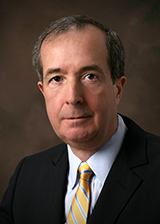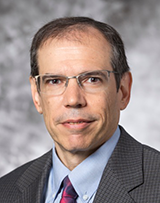| Thursday, December 8 | |
| 10:00 - 11:00 | |
| Keynote: DT5G-K1: Thomas L. Marzetta - Massive MIMO: It Really Works! | |
| 11:00 - 11:40 | |
| Keynote: DT5G-K2: Joseph Cavallaro - Algorithms, Architectures, and Testbeds for 5G Wireless Communication Systems | |
| 11:00 - 12:20 | |
| DT5G-1: Transceiver Implementations and Architectures | |
| 14:00 - 15:40 | |
| DT5G-2: Millimeter Wave Technologies | |
| 16:10 - 17:30 | |
| DT5G-3: Cellular 5G Systems | |
| DT5G-P1: Transceivers and Signal Processing for 5G Wireless Systems | |
| Friday, December 9 | |
| 10:00 - 11:00 | |
| Keynote: DT5G-K3: Robert W. Heath Jr - Signal Processing Challenges in Broadband mmWave | |
| 11:00 - 12:20 | |
| DT5G-4: Transceiver Algorithms | |
| 14:00 - 15:40 | |
| DT5G-5: Massive MIMO Systems | |
| DT5G-P2: Massive MIMO and mmWave | |
| 16:10 - 17:30 | |
| DT5G-6: Full Duplex, Transceiver and RF Technologies | |

Recent Massive MIMO experiments have convincingly demonstrated the soundness of the underlying concept. Massive MIMO is poised to deliver spectacular improvements over 4G wireless technologies.
Massive MIMO creates virtual parallel circuits, each occupying the full spectral bandwidth, between a multiplicity of single-antenna terminals and an array of individually controlled antennas. Area spectral efficiency improvements over 4G technologies may range from ten to one-thousand, depending on the mobility of the terminals. Other benefits include energy efficiency gains in excess of one-thousand, and simple and effective power control that yields uniformly great service throughout the cell.
Cellular deployment of Massive MIMO in the prime sub-5GHz bands will be both hugely beneficial and highly disruptive, requiring either new TDD spectrum, or the reassignment of existing FDD spectrum, and the replacement of all base station and user equipment. There are less disruptive, but still exciting, applications of Massive MIMO, including small cell backhaul and fixed wireless access to homes, for which there are no back compatibility issues.

Wireless communication system concepts for 5G include a variety of advanced physical layer algorithms to provide high data rates and increased efficiency. Each of these algorithms provide different challenges for real-time performance based on the tradeoffs between computation, communication, and I/O bottlenecks and area, time, and power complexity. In particular, Massive MIMO systems can provide many benefits for both uplink detection and downlink beamforming as the number of base station antennas increases. Similarly, channel coding, such as LDPC, can support high data rates in many channel conditions. At the RF level, limited available spectrum is leading to noncontiguous channel allocations where digital pre-distortion (DPD) can be used to improve power amplifier efficiency. Each of these schemes impose complex system organization challenges in the interconnection of multiple RF transceivers with multiple memory and computation units with multiple data rates within the system. Parallel numerical methods can be applied to tradeoff computational complexity with minimal effect on error rate performance. Simulation acceleration environments can be used to provide thorough system performance analysis. In this talk, we will focus on design tools for high level synthesis (HLS) to capture and express parallelism in wireless algorithms. This also includes the mapping to GPU and multicore systems for high speed simulation. HLS can also be applied to FPGA and ASIC synthesis, however, there exist tradeoffs in area with flexibility and reuse of designs. Heterogeneous system architectures as expressed by Systems on Chip (SoC) attempt to address these system issues. The talk will conclude with a discussion of computation testbeds from supercomputers through desktop GPU to single board systems. The integration with radio testbeds from WARP and USRP to NI and Argos prototype massive MIMO systems will be explored.

Millimeter wave is the future of cellular and local area networks. Though the main motivation for mmWave is large spectral channels, most signal processing work has focused on tractable narrowband signal models. In this talk I review the challenges associated with signal processing in broadband millimeter wave channels. Then I review recent developments on two important topics. First, I explain the design of hybrid precoding and combing algorithms, which use a mixture of frequency-flat analog and frequency-selective digital precoding and combining. Second, I show how to formulate the hybrid frequency selective channel estimation algorithm to exploiting sparsity in the delay and angular domains. The hybrid precoders and combiners can then be configured based on the channel estimates, to achieve high spectral efficiency in broadband MIMO channels.
Wireless communications networks and associated devices are currently under intensive research as cellular networks are moving from 3G/4G towards the 5G era. Significant technological advances are required to meet the demand for increased data rates, substantially reduced latencies, support for a massive number of simultaneous devices, increased energy efficiency, and QoS guarantees.
Some of the most promising approaches for meeting the new requirements include the adoption of cmWave and mmWave frequencies, cognitive radio and other intelligent and flexible methods for RF spectrum use, device centric network architecture, massive MIMO, cooperative network wide multipoint processing, core network virtualization and reconsideration of the data, control and management planes.
Meeting the 5G demands is tied to the computational platforms of base stations and devices on which the cellular network is built. Recent advances in computing solutions, such as heterogeneous, data parallel and reconfigurable platforms, together with technological advances in analog, mixed-signal and digital circuits provide the means for developing efficient, yet flexible computation platforms. At the same time, the constantly increasing complexity of wireless communications solutions and underlying processing platforms mandatorily requires advances in design methodologies, high-level programming languages and tools. Hence, development and innovation of concrete 5G solutions requires experts from both wireless communications, and design and implementation communities.
Submissions are welcome on topics including:
[Download the PDF Call for Papers]
Prospective authors are invited to submit papers with up to four pages for technical content including figures and with one optional 5th page containing references only. Manuscripts should be original (not submitted/published anywhere else) and written in accordance with the standard IEEE double-column paper template. Submission is through the GlobalSIP website at http://2016.ieeeglobalsip.org/Papers.asp.
| Paper Submission Deadline | |
| Review Results Announced | |
| Camera-Ready Papers Due | September 30, 2016 |


